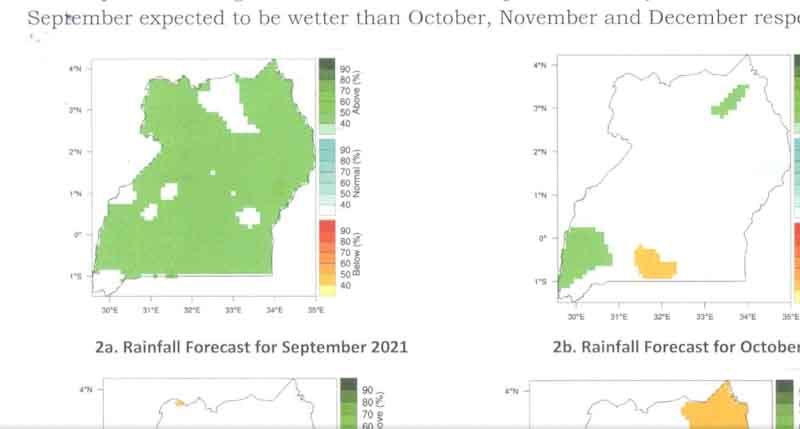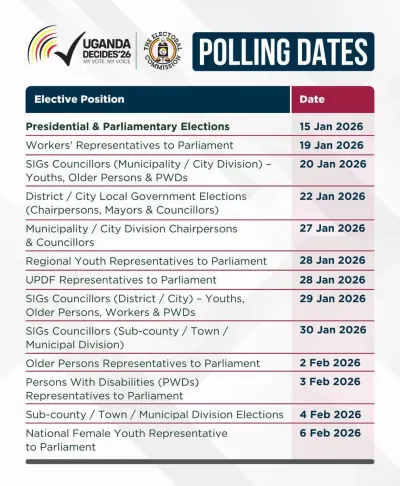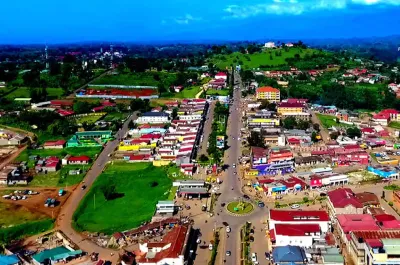

A screen grab of the UNMA graphic indicating that the current rain season will be weaker than usual
The delay in the offset of rains for the normal planting season in some areas, coupled with baking heat that has already destroyed planted seeds in other parts like the central region, are probably signs of worse conditions to come over the next three months across the country.
The latest seasonal forecast report for September to December by the Uganda National Meteorological Authority (UNMA) indicates that most parts of the country will receive between normal and suppressed rains in the coming three months, a period that is usually characterized with heavy rainfall.
The UNMA report shows that contrary to previous trends, September will be the peak of the rain season and therefore wetter than October – the usual peak, with the season ending in November.
The UNMA has attributed the drier conditions to the current negative state of the Indian Ocean Dipole, current neutral El Nino oscillation in the central and eastern Pacific ocean.
Uganda’s physical features like large water bodies and mountains are forecast to mitigate the negative impact of the ocean phenomena.
“Based on the above considerations as well as details of the climatology, scientific tools for climate analysis and the physical features of the different regions of the country, UNMA has come up with a disagregated monthly spatial distribution of seasonal rainfall forecasts with September expected to be wetter than October, November and December.”
The forecast has huge, mostly negative implications for millions of ordinary Ugandans who depend on agriculture for a living such as increased likelihood of food shortages and poor nutrition, economic instability especially in terms of inflation and agricultural losses for farmers.
For example, growers of late-maturing crops such as maize, many of whom have not even planted, are facing a bleak future as there’s a possibility they won’t get enough rain to support the crops to maturity.
Maize is the most important cereal crop in Uganda and also the most exported food crop to regional markets in Kenya and South Sudan.
At the national level, the UNMA has therefore warned disaster preparedness agencies to activate their contingency measures to counter adverse effects of the drier conditions.
At the micro or individual level, the UNMA has advised farmers to undertake practices such as mulching, irrigation and careful use of limited water.














Henry Lutaaya
Leave a Comment
Your email address will not be published.